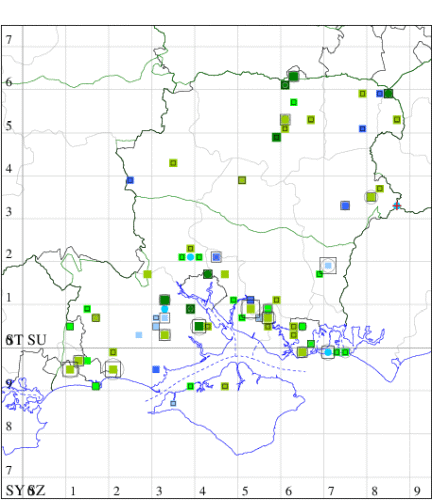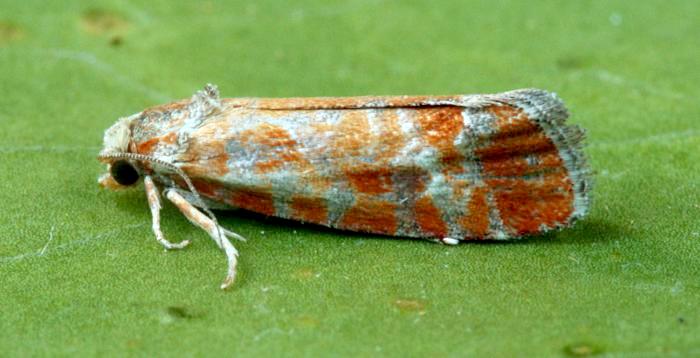Pine Shoot Moth
Rhyacionia buoliana
Checklist Number49.305 [B&F: 1210]
Verification
Record will normally be accepted but photo evidence may be required - check with CMR if not sure of identity
Classification
| Family: | Tortricidae |
| Subfamily: | Olethreutinae |
| Genus: | Rhyacionia |
| Species: | buoliana |
| Authority: | ([Denis & Schiffermüller], 1775) |
Local in pine woodland, plantations and nurseries throughout much of England and Wales, rare elsewhere. In Hampshire common in Scots Pine woodland, especially in young plantations. Recorded on the Isle of Wight for the first time since 1948 at Cranmore in 2004. Wingspan 16-24 mm. Distinguished from R. pinicolana by the straighter costa, the distinctly orange markings and the triangular pre-tornal marking of the forewing, and the generally darker hindwings [Bradley]. Larva feeds within needles and young shoots of Scots Pine, Lodgepole Pine and Corsican Pine, subsequently burrowing into and feeding on developing buds, causing sufficient damage to be a serious pest in some areas.


The abundance in each month is indicated as follows:
 No records
No records Very occasional
Very occasional Irregular
Irregular Uncommon
Uncommon Off-peak, but not unusual
Off-peak, but not unusual Off-peak, but not unusual
Off-peak, but not unusual Main flight time
Main flight time| J | F | M | A | M | J | J | A | S | O | N | D | |
|---|---|---|---|---|---|---|---|---|---|---|---|---|
| Adult |  |  |  |  |  |  |  |  |  |  |  |  |
| Larval |  |  |  |  |  |  |  |  |  |  |  |  |


